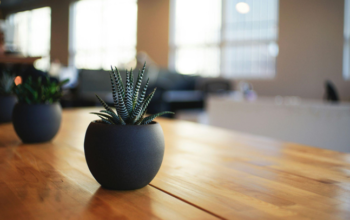Epoxy resins consist of two major components: hardener and resin. The blend of these components results in a chemical reaction that eventually leads to the hardening of liquid resin to a clear, high-gloss plastic. The entire process takes only a few hours.
However, one needs to be careful when working with epoxy resin at home. You can create some unique and amazing pieces of art using resin. But it’s essential to follow the correct procedures to come up with a perfect countertop. Check out Caesarstone for the pros and cons of using epoxy resin for countertops.
If you are looking forward to designing your countertop using resin, this article will prove to be of great help. It covers all the significant aspects of epoxy resin applications for DIY projects. So read on to learn about how to use epoxy resin.
Things Needed For Working With Epoxy Resin
What is epoxy resin used for?
There are countless possibilities for using resin. Hence, there are no limits to the items you need to design a piece of art or countertop using resin. You may need plenty of molds, sparkles, pigments, ink, and multiple other tools for blending in the epoxy.
Most of the items will be specific to your project, but some basic items include the following:
- Gloves
- High-quality cast resin
- Mask or Respirator
- Mixing Cups
- Silicone Mold
- Wagner HT400 Heat Gun
- Baking Pan
- Popsicle Sticks
- Freezer Paper
- Measuring Cup (silicon)
- Plastic Spoons
- Toothpicks
- Gold Flakes, Glitter, Chunky Glitter, or any other similar item (for inclusions)
Process To Making Epoxy Resin Art At Home
Decide the color selection and image design for your epoxy resin project. Once you have settled on the design, image, and everything else, follow the steps listed below.
Step 1
Get started with preparing the surface. Ensure that the workspace is dust-free and clean. The room should be well-ventilated. Use foils for protecting the room’s floor and workstation. Also, the materials that you need for the project should be easy to reach.
Step 2
Prepare the mold/surface and use tape wherever required so that even if the epoxy drops outside the mold or on the undersides, you can easily get a smooth finish.
Step 3
Place the prepared mold or the epoxy base surface on the tabletop. It’s best to use a leveling tool to make sure that the surface sits evenly on the worktop, or else you may not be able to achieve the desired design.
The chances are that the imbalance could affect the durability of the item. Don’t forget to use nitrile gloves (disposable). Avoid using latex or vinyl gloves. Wear a long-sleeved shirt for maximum protection.
Step 4
Next, mix the hardener and resin in a 1:1 ratio for no less than three minutes. The ratio should be as per the volume and not the component’s weight. Stir using a plastic spatula. Insufficient mixing of the components may result in the formation of sticky mass, which may not harden properly. It will eventually affect its durability and look.
Step 5
Now is the time to add color to the resin. First, add the color of your choice in the disposable cups containing the resin mix. Start with adding a few drops of pigments. You may add more color later on to the mix if needed.
Now pour the epoxy resin carefully on the prepared surface. Different pouring techniques include Dirty Pour, Puddle Pour, Swirl, Flip Cup, Air Swipe, and more. You may use any of these according to your project’s requirements.
Step 6
If need be, use a moderate quantity of silicone oil to the mixture. This substance helps in cell formation and influences the resin’s course when poured on the surface. Use a silicone brush, spatula, foam roller, knife, or a brush or tilt the surface as needed to achieve a smooth finish.
Step 7
Make sure there aren’t any air bubbles. They can be easily removed with the help of a blow-dryer or butane torch.
Now, leave the casting resin to rest and dry. Note that the drying period depends on the quality and type of resin used for the project. The resin may become vicious if you disturb the surface and start pulling threads (similar to chewing gum).
Also, the resin may lose its self-leveling property. Heating delays the drying process for a limited period. Use tweezers to remove any foreign particles from the epoxy artwork.
Step 8
Once all the above steps are completed and the resin is free of foreign particles and air bubbles, cover the artwork to protect it from foreign particles and dust. Make sure the cover/sheet doesn’t come in contact with the resin.
It takes around 24 hours for the epoxy resin to dry completely (it could be more or less, depending on the item that is being created). Cure it after three days. Make sure the resin image isn’t exposed to temperature fluctuations.
If need be, you may apply more resin layers once the resin art dries (after 5 hours approximately).
Ideal Epoxy Resin Uses
There are several surface options that are ideal for creating epoxy resin artwork. You can use the surface made of metal, wood, glass, concrete, plexiglass, or any other similar material.
Avoid using absorbent and porous surfaces. Even canvases are unsuitable as the resin’s weight would make them saggy. Resultantly, the resin mix will converge in the surface’s center.
Besides these materials, you can also cover kitchen/bathroom countertops, furniture, and floors with epoxy resin.
Endnote
Now that you know how to use epoxy resin, follow the above procedures, and you can easily create a flawless product. Use an adequate quantity of resin for the project so that there are no dents or holes in your epoxy resin artwork after drying. Then, sand the surface carefully to achieve a perfectly finished smooth surface. Also, be careful when using silicone oil to avoid the formation of dents.
Related Posts












